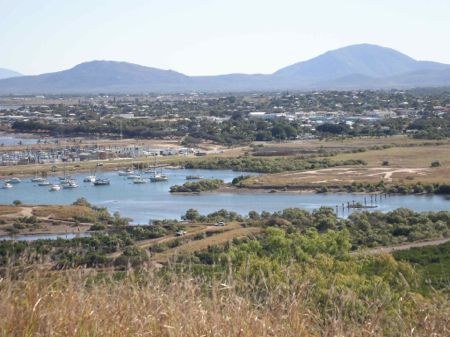While there is always the possibility that these assumptions may not necessarily translate into reality within the next twenty-five years it is also quite possible that growth could exceed the predictions.
Based on that possibility it’s even more important that long term planing issues are addressed over the next few years.

Crystal-ball-gazing is an inexact science.
In fact, when you look at it, it’s not really a science at all, but every journey needs to start with a single step, so if you’re going to be casting your eyes forward to what Bowen might look like twenty-five years down the track you might be advised to spell out the assumptions you’re working from.
Every one of these assumptions is, in essence, a guess, and none of them might actually end up eventuating, but I’m an advocate of raising a hypothesis and seeing how things work out in practice rather than making a statement like Bowen’s population could double or treble if these projects go ahead, and then following it up with but then again it mightn’t, so we’ll wait and see what happens before we put anything in place to deal with the issues.
So the assumption is that, in the wake of (to borrow a comment from Mayor Brunker as reported in the Bowen Independent in January 2012) the tidal wave from the mining industry that is going to hit us and subsequent developments around Abbot Point Bowen’s population may reach twenty-(double) or even thirty-thousand (treble the current ten thousand or so).
A significant part of the population will be employed in the corridor between the Don River Bridge and an industrial precinct behind Abbot Point. Many of those workers will be involved in shift work. There will be significant transport issues involved as they move between their homes and their employment at the beginning and the end of each shift.
Abbot Point could become the major general cargo facility north of Gladstone and the industrial precinct inland from the port will contain a number of different projects. When I started the original version of these pages the assumption was that one of these would be the Chalco alumina refinery. That failed to materialise, but given the area of land that has been set aside and the development of deep water port facilities, something eventually will happen in the State Development Area.
A significant part of the increased population will live in new residential developments between the existing town and Whitsunday Shores.
There will be a new commercial centre situated between the existing town and the growth corridor where Bowen’s residents will buy hardware, furniture and other big ticket once in a while purchases. There will also be supermarket and other retail facilities in the area, which will also contain a number of roadhouses and fast food outlets to cater for traffic along the highway.
The increased population will need a greater range of education and health facilities and access to additional sporting and recreational facilities. The town will have a second high school, at least three new primary schools and expanded access to post-secondary study.
There will be very little farming activity to the east of the Don River and the owners of any land still being farmed will want to subdivide it for residential purposes. There will be almost continuous residential, commercial and light industrial development between the mouth of the Don and a point somewhere south of the existing Whitsunday Shores estate.
That’s the general picture. What I’m interested in are details that will determine whether the place is worth living in, and that’s what the rest of these pages are about.

